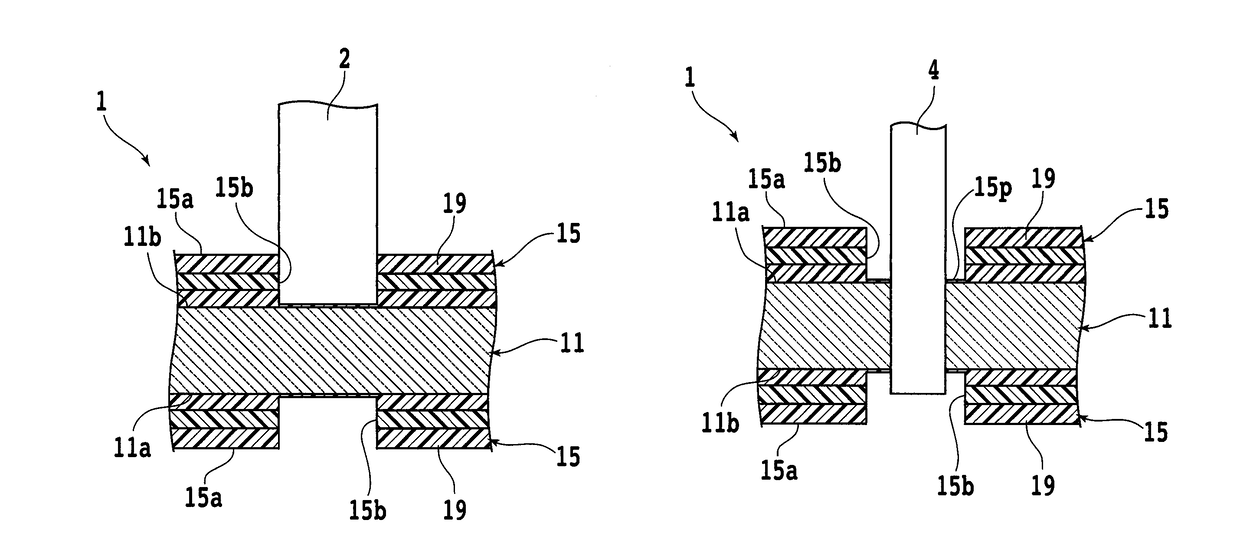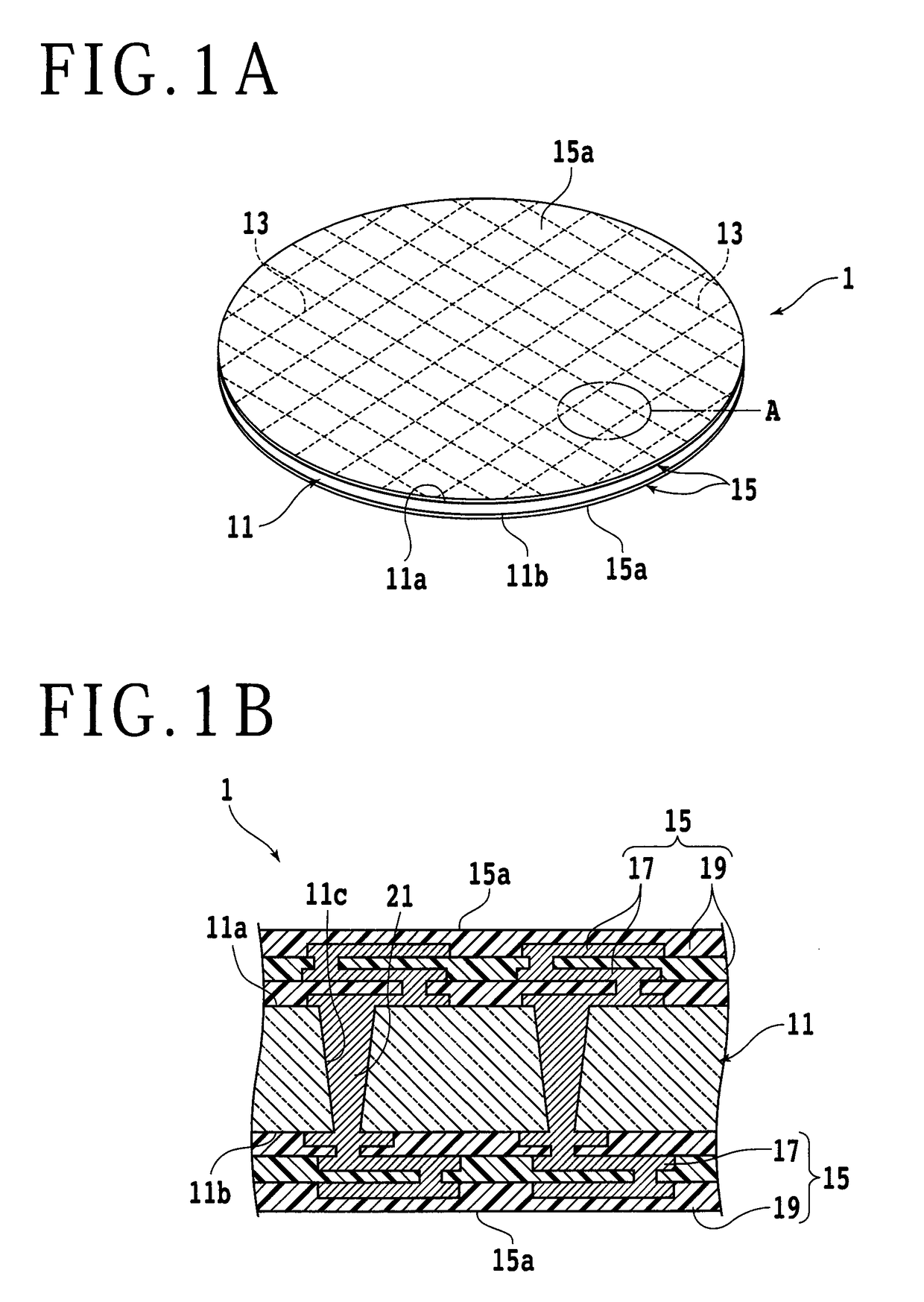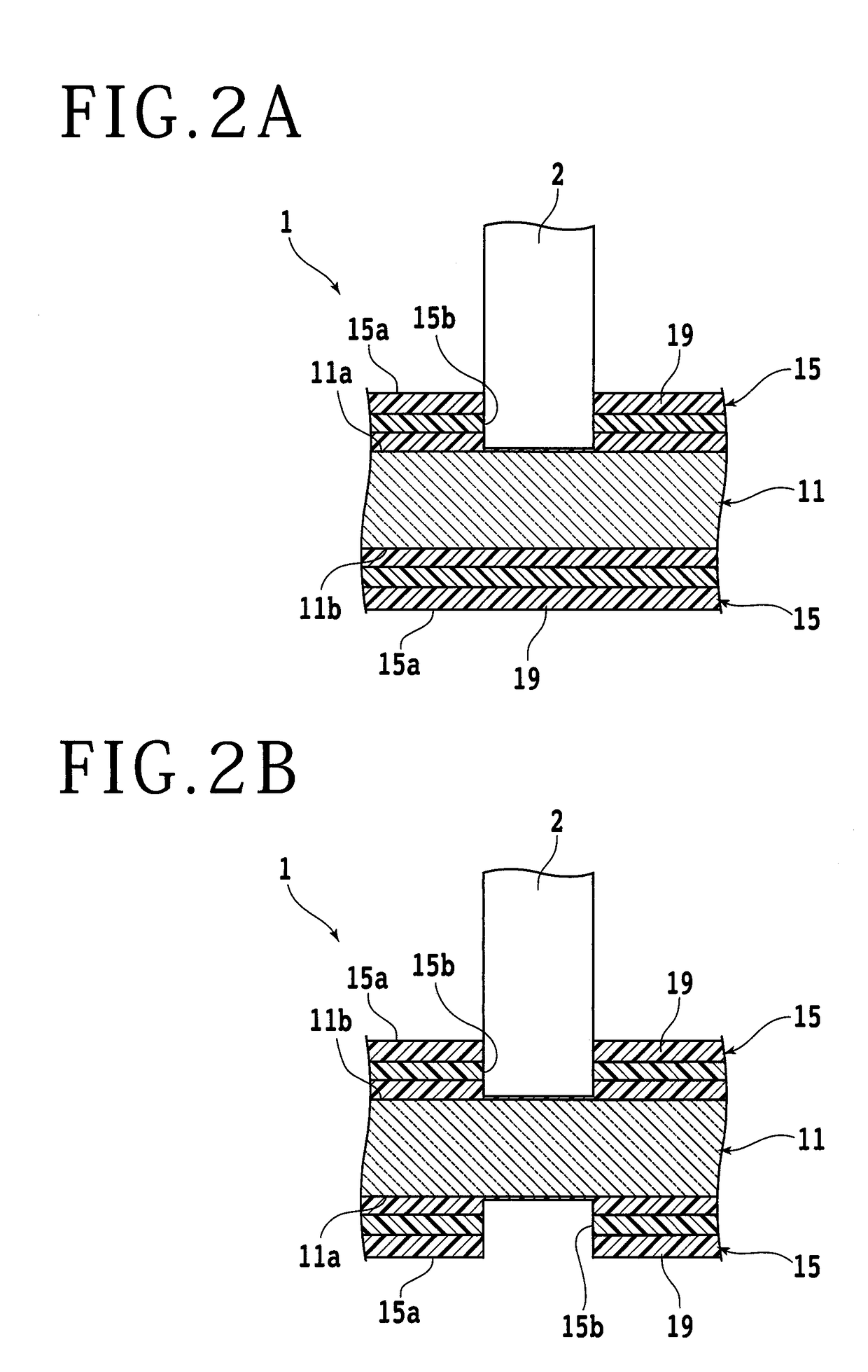Interposer manufacturing method
a manufacturing method and interposer technology, applied in the manufacture of tools, grinding machine components, welding/soldering/cutting articles, etc., can solve the problems of increased fraction defect, cutting blade, heat resistance problem, etc., and achieve the effect of improving the heat resistance of the interposer using the glass substrate and easy separation of the multi-layer member
- Summary
- Abstract
- Description
- Claims
- Application Information
AI Technical Summary
Benefits of technology
Problems solved by technology
Method used
Image
Examples
Embodiment Construction
[0019]A preferred embodiment of the present invention will now be described with reference to the attached drawings. The interposer manufacturing method according to this preferred embodiment is a method of manufacturing a plurality of interposers from a material substrate including a glass substrate and a multilayer member. This method includes a cut groove forming step (see FIGS. 2A and 2B) and a dividing step (see FIG. 3A). In the cut groove forming step, an exposed surface of the multilayer member is cut by a cutting blade (first cutting blade) along a plurality of division lines set on the glass substrate, thereby forming a cut groove on the multilayer member along each division line, in which each cut groove has a depth not reaching the glass substrate (i.e., the depth of each cut groove is slightly less than the thickness of the multilayer member). In the dividing step, the glass substrate is cut along each cut groove by another cutting blade (second cutting blade) having a t...
PUM
| Property | Measurement | Unit |
|---|---|---|
| grain size | aaaaa | aaaaa |
| grain size | aaaaa | aaaaa |
| thickness | aaaaa | aaaaa |
Abstract
Description
Claims
Application Information
 Login to View More
Login to View More - R&D Engineer
- R&D Manager
- IP Professional
- Industry Leading Data Capabilities
- Powerful AI technology
- Patent DNA Extraction
Browse by: Latest US Patents, China's latest patents, Technical Efficacy Thesaurus, Application Domain, Technology Topic, Popular Technical Reports.
© 2024 PatSnap. All rights reserved.Legal|Privacy policy|Modern Slavery Act Transparency Statement|Sitemap|About US| Contact US: help@patsnap.com










